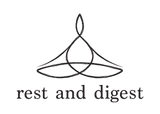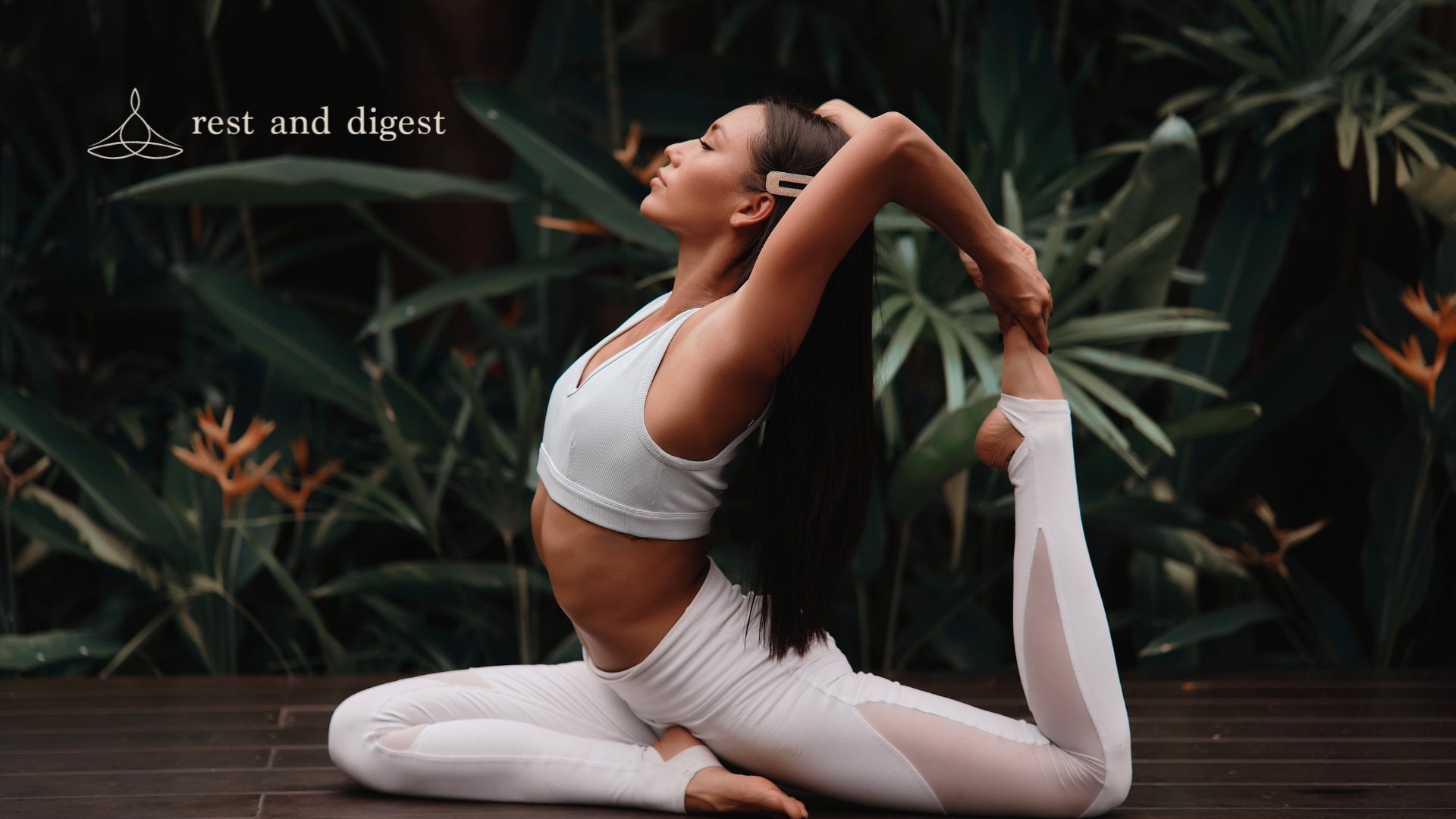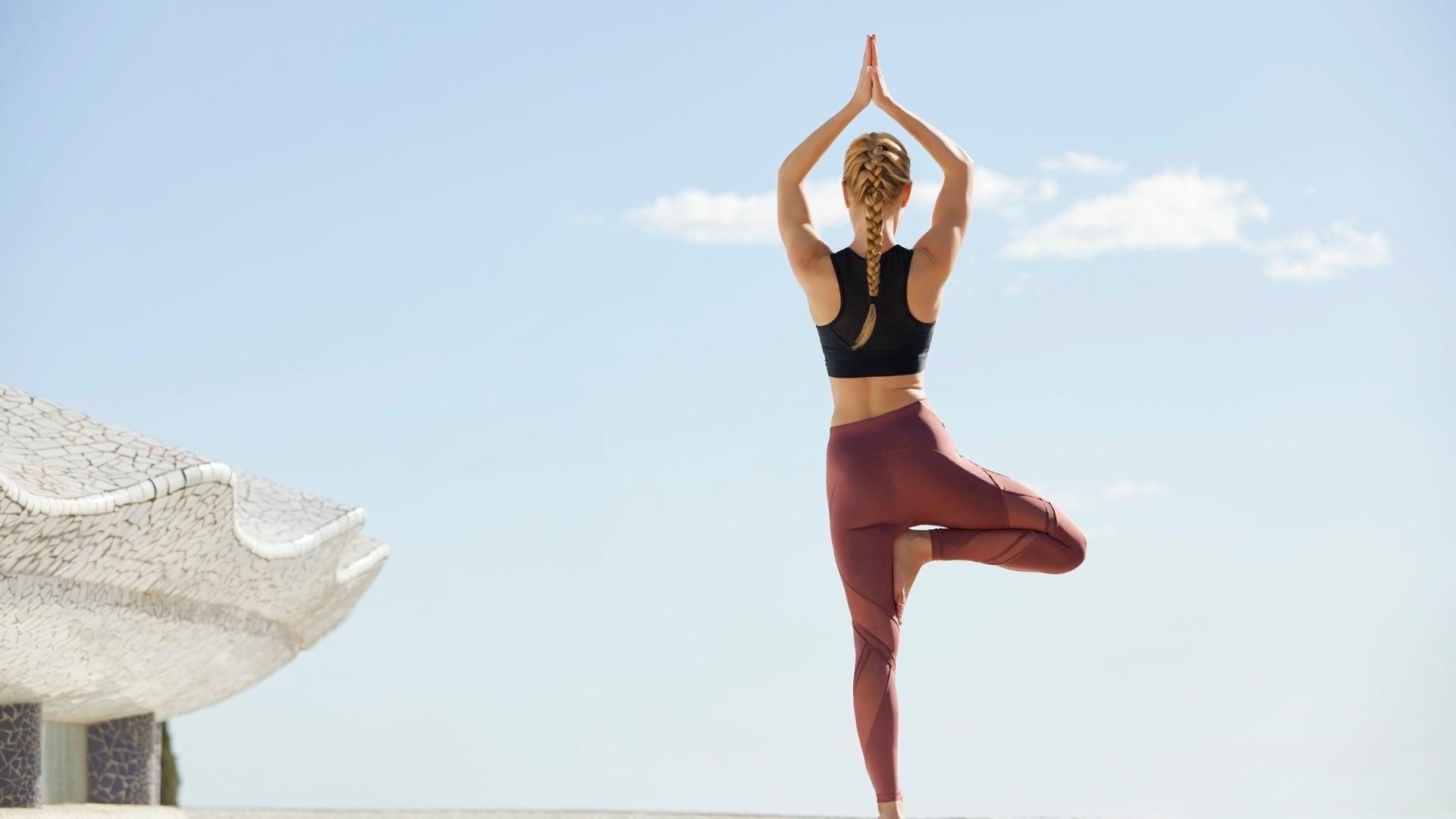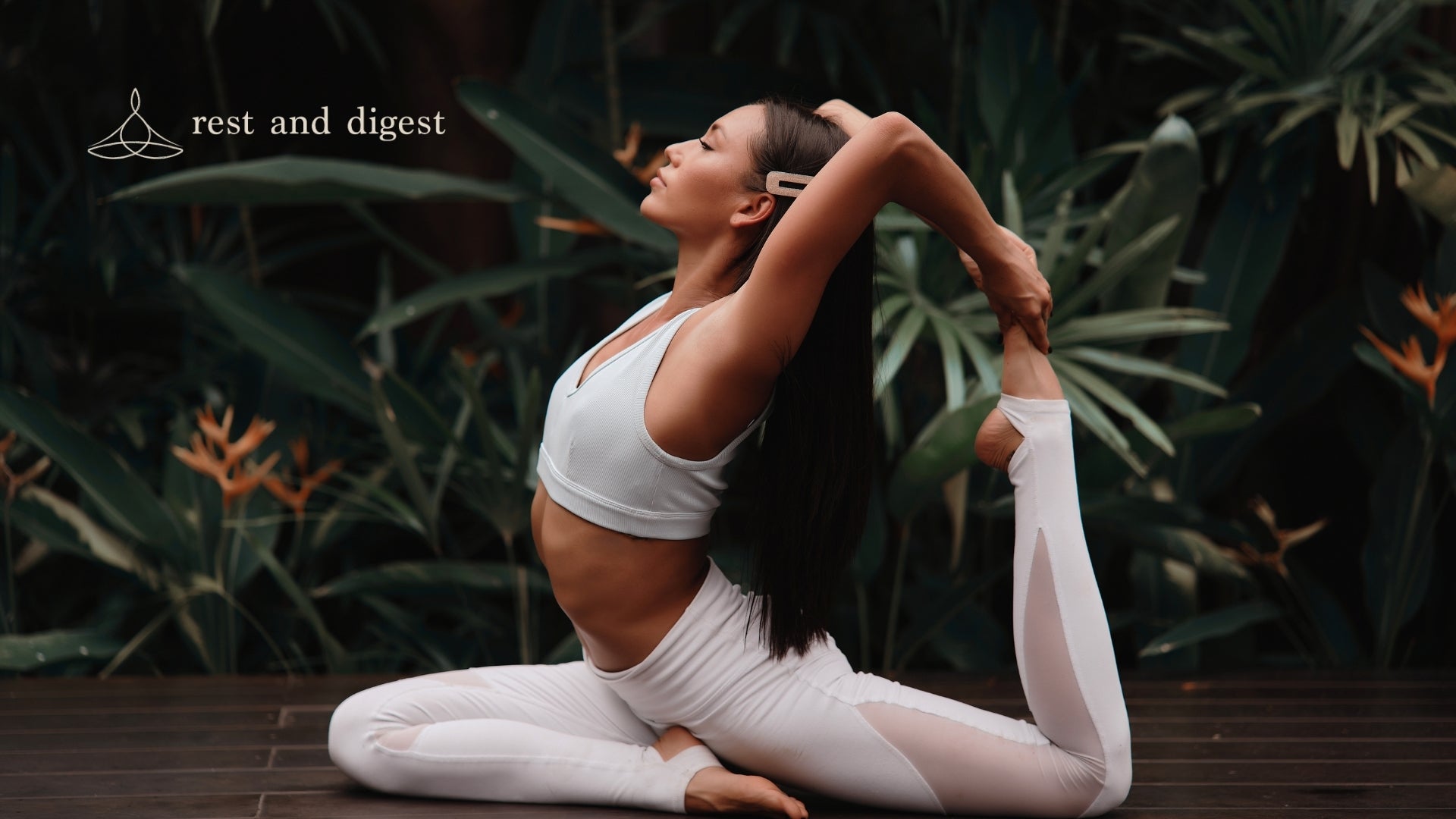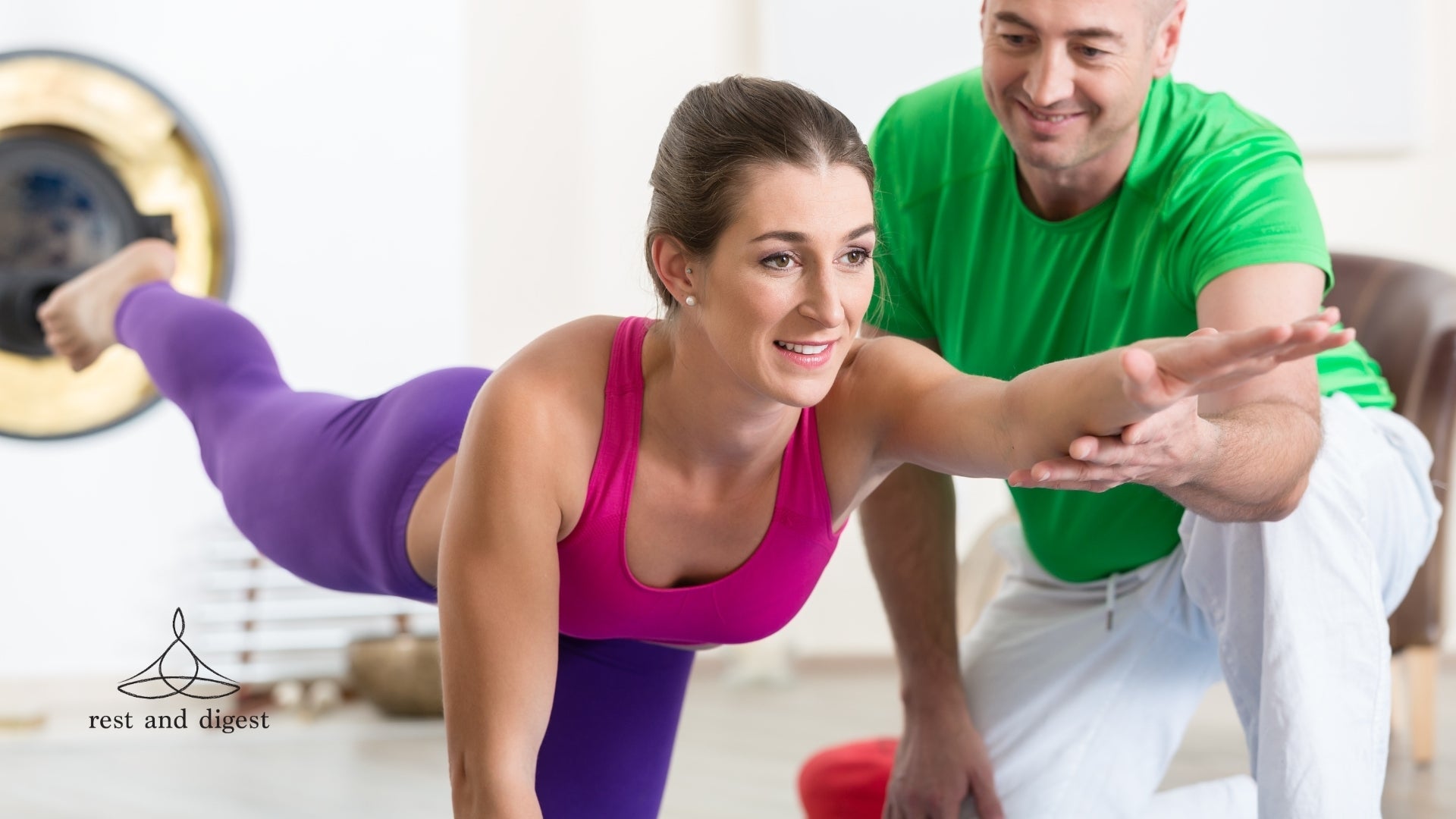
Yoga for Beginners
Are you looking for a route to wellbeing that feeds your body, mind and soul? You need not look further than yoga, a practice that promises to help explore the depths of your own being while also assisting you in gaining inner calm, strength and flexibility. Whether you are a newcomer to the practice or looking to deepen your understanding of its many advantages, this journey is tailor-made for you.
In this article, we’ll explore everything you need to know about yoga from its history and philosophy to its useful applications in day-to-day living. You’ll also learn about the benefits of yoga for beginners and some useful self care tips to get started so that you can go off on a rewarding journey of consciousness, self-exploration and personal development.
If you are new to yoga, it is the perfect introduction to all the good things that yoga can bring to your life. At Rest and Digest, we look forward to sharing that yoga journey with you.
What is Yoga?
Yoga is a holistic practice that combines physical postures, breathing exercises, meditation, and moral precepts to enhance one's mental, emotional, and spiritual health.
The History and Origins: The practice of yoga traces back its roots thousands years ago in India. It began as a spiritual practice in Hinduism, Buddhism and Jainism, evolving over time into different schools of thought. The term “yoga” itself means the union of individual consciousness with universal consciousness.
The Philosophy behind the Practice of Yoga: At the heart of yoga philosophy lies self-realization (moksha) through self-discipline and reflection. It can lead us towards living a more joyful and peaceful life through practices such as compassion, watchfulness or non-attachment.
What are the Different Types of Yoga?
Yoga presents a wide range of styles and practices that are able to meet different expectations and requirements.
- Hatha: With a focus on physical postures and breath control, this style is best suited to beginners.
- Vinyasa: Combining breath with flowing movements, this type of yoga helps improve strength and flexibility.
- Ashtanga: This practice entails a progression through a series of poses done in sync with breathing fostering discipline, stamina, and endurance.
-
Bikram: It involves doing yoga in hot places that help increase flexibility as well as detoxify your body.
Basic Yoga Poses for Beginners

Standing poses (Mountain Pose, Forward Bend, Warrior Poses)
The backbone of yoga consists in standing-poses which develop steadiness and stability. While Forward Bend (Uttanasana) strengthens the spine and hamstrings, Mountain Pose (Tadasana) teaches proper alignment and posture. Arms, legs, and core muscles become stronger with Virabhadrasana I, II, III (Warrior Pose). And it also promotes better concentration and determination.
Sitting poses (Lotus Pose, Easy Pose, Seated Forward Bend)
Sitting poses work on the hips, pelvis and lower back encouraging relaxation and self-awareness. Lotus Pose (Padmasana) is a traditional meditation posture meant to open the hips and stretch the spine. Easy Pose (Sukhasana) may be done in a crossed-legged position which is comfortable for meditation or pranayama. Seated Forward Bend (Paschimottanasana) stretches hamstrings and spine calming the mind, thus reducing stress.
Supine poses (Corpse Pose, Bridge Pose)
Supine poses are done on one’s back hence facilitate relaxation, rejuvenation and release of tension. (Corpse Pose) Savasana is an extremely regenerative posture that helps encourage full-body relaxation with complete surrendering feeling. Bridge Pose (Setu Bandhasana) strengthens glutes, hamstrings and back while opening up shoulders and chest.
Prone poses (Child's Pose, Cobra Pose)
Prone postures help with spinal flexibility, strengthen back muscles, and alleviate tension in the lower back by having the practitioner lie on their stomach. Bhujangasana, or Cobra Position, enhances body alignment, expands the chest, and strengthens the spine. Child's Pose (Balasana) is a gentle way to stretch the hips, thighs, and ankles while offering a peaceful stance for rest and reflection.
Breathing Techniques (Pranayama) for Beginners
Breath control, or pranayama, is an essential part of yoga for beginners. It relaxes the mind and increases vitality while focusing and increasing power of concentration.
Basic Breathing Exercises:
- Ujjayi breath, also known as victorious breath, requires inhaling deeply through the nose whilst slightly narrowing the back of your throat to produce a gentle noise resembling that of ocean waves.
- In alternate nostril breathing, inhalation and exhalation occur alternatively in each nostril hence producing balance and harmony within both body and mind.
Getting Started with Yoga
Starting off on a yoga journey is potentially life-changing but demands preparedness and proper attitude. Here are some tips to get you started with yoga for beginners.
Preparing for Your First Yoga Session: Before attending your first class in yoga, do not rush into it without any mental preparation. Let go of all expectations or judgments and approach it with an open mind and heart.
Necessary Equipment and Attire: When practicing yoga for beginners there is no need for costly equipment; only comfortable clothes that facilitate free movement along with non-slip mat will be required to keep from skidding while trying out poses.
Finding a Suitable Yoga Class or Instructor: Discover beginner-friendly yoga classes or instructors who specifically cater for novices like you. Some factors to think about include location, class schedule, teacher’s style of teaching, size etc.
Developing A Routine for Yoga

Entering the world of yoga is not just about passion; it also requires dedication and organization before you start practicing. This is what you need to do when it comes to yoga for beginners.
Create Uniform Procedures: For success when starting out with yoga, maintaining a routine is crucial. Allocate some time every day or week of your life to do your practice. You may choose an hour that suits you best such as early morning hours, lunch time or even evening.
Assign Reasonable Goals: This needs to be in line with what you can immediately accomplish given your current circumstances. Whether the goal is stress relief, improved flexibility, or mastery of a specific posture, always be honest about these things and acknowledge any progress that is made in these directions.
Increase Intensity and Duration Gradually: When you are more familiar with this workout plan, increase the intensity of your sessions gently so as to challenge yourself. Try out higher-level poses like holding them longer; alternatively redoing some parts of your sequence when necessary.
Overcoming Challenges and Staying Motivated
It is not always a smooth journey in yoga; there will, certainly, be hurdles along the path. Here’s how you can prepare for it.
- Expect common challenges like lack of time, self-doubt or discomfort with some postures. The point is to remember that progress takes time and patience and, therefore, be gentle with yourself as you deal with these obstacles.
- Stay enthusiastic by setting some short-term targets so as to record your development and alter your routine to make it more appealing and fun. Find motivation in the improvements you see in your strength, flexibility, and overall well-being.
- Engage with other people who love doing yoga for inspiration, and support. You may consider joining a yoga community or online forum to share experiences, ask questions, and receive guidance from experienced practitioners and instructors.
Wrapping Up
Yoga offers a comprehensive approach to good health and wellness, which includes both physical and mental as well as spiritual discipline. By mastering the fundamental poses of yoga for beginners and the rhythmic breath, we set the foundation for a wholesome journey of self-discovery and personal growth. And, let’s not forget about the power of community-encouraging words from fellow yogis, wise thoughts and expressions reminding us that we are all one family.
So, let's roll out our yoga mats, open our hearts and dive headfirst into this exhilarating journey. With each breath, each stretch, and each moment of stillness, we’re not just practicing yoga-we’re embracing life in all its beauty and complexity.

